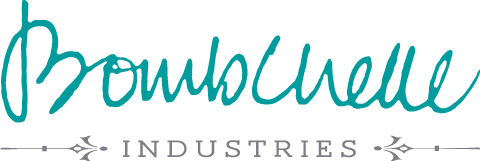
Today’s Workflow Wednesdays post is a contribution from a dear friend and colleague Grace Quantock–she’s truly a joy to know and I’m so happy to have her contributing to the series!

Running your own business can be a huge challenge, and sometimes it feels like it’s a PhD in patience and confidence, just entering that arena. Running a business while living with a health challenge can seem like it requires a super-power. But many people are turning to entrepreneurship due to chronic illness. It has lots of positives; you can often work from home, set your own hours, take rests in between tasks and make a living doing what you love.
However, adding the pressure of work to a life already struggling with pain and exhaustion can be a powder keg. I have been working with chronic illness for several years and in that time I’ve tried the good, bad and ugly in terms of what helps and what doesn’t. I’d love to share the processes that work for me in living and working with illness.
Step One: Set Up Systems
When you are living with illness it’s likely that your energy is going to be limited. And so anywhere we can save some energy is going to be very useful. Systems are super for the disabled entrepreneur as they save so much time and energy.
Michelle is of course, The Systems Goddess, and if you do one thing, I really encourage you to implement systems.
What are systems? What do you do in your business that you repeat over and over but rely on memory for?
For example, in my company Healing Boxes, we sell boxes of ethical healing goodies for people with illness. And so we need those goodies in stock. When stocks get low, what happens? We need to:
- Notice those stocks are low
- Make a note to order more
- Find the details of the supplier
- Contact them by email or phone
- …with all our wholesale order numbers
- …and bank details
- …and know what size order we need
And all that information needs to be written down somewhere. In working with Michelle, I developed flow-charts for my business. So now, when I need to do something, I go to the appropriate flow chart and all the information is there, at hand. It’s simple and saves so much fussing, searching for details, trying to remember things and repeating myself!
Step Two: Adopt a Re-Frame Mindset (turn your problems into possibilities)
Write down everything that you think is holding you back right now. This could be: a day job, debt, can’t get a loan to start up, lack of business knowledge, feeling un-confident, having small children and no time, being ill and unable to work, not thinking your idea is good enough, not having support of people around you and so on.
Next we are going to reframe each of those challenges into a positive. For example:
A day job is an asset because….you get to set up and launch your business without the financial pressure of making it support you from the beginning, as you already have you day-job income!
Debt is a positive because… it’s making you examine and shift your relationship with money. Can’t get a loan to start up makes your business better because…you have to re-think what you really need to launch and what you can do without. No loan means you are bootstrapping the business – and running on a shoe-string means no loans to pay back and you turn a profit, and can invest money back into your business to grow it so much sooner.
Lack of business knowledge is useful as it means you don’t have any preconceived ideas or aren’t beginning your business based on incorrect information. You are in a perfect position to seek out the best teachers, mentor and allies and learn as you grow.
Feeling un-confident is an opportunity as it allows you to dive deeply into aspects of business like communication, sales, networking and pitching. These are things many people aren’t good at but just get by with. They are essential to any business and you are about to excel in them.
Having small children and no time may seem like it’s holding you back when actually it’s teaching you to work incredibly effectively. Most people waste much of their time. 20% of their time gives 80% of their results. But they waste 80% of their time on inefficient things and procrastination. If you only have 20% of time and energy to work on your business you learn to be incredibly organised and effective. So imagine how much you’ll achieve when your children are older and you have more time but the same level of amazing efficiency? Anyone who has had to look after small children has to be innovative and deal with crises – and these things can be transferred to business.
Being ill and unable to work….can hold you back, but it can also be a great training ground. Being ill teaches you negotiation (with doctors), patience (when dealing with the benefits systems), how to fill in forms and deal with bureaucracy, prioritisation (when you are ill and can’t do much you learn to do the most important things first). Not to mention managing set backs, taking the long view–you have to do this when living with chronic illness and the skills are needed in business too. I looked at the skills I had learned from managing chronic fatigue, dealing with medical frustrations and the red tape of the benefits system then used the subsequent patience, time management and negotiation skills to help my clients via coaching and training.
I have very limited energy, but that meant that I could focus what energy I had on the things that were most important to my business, and that in turn streamlined all the work I did.
Not thinking your idea is good enough…is actually a bonus as this means you examine it, question it and re-work and refine it until it’s the best it can be.
Not having support of people around you…forces you to seek out mentors and entrepreneurial communities that will support you!
Now you try. List out your problems and how it can actually be a positive. This mindset can take time to develop, but it’s a great tool for any entrepreneur!
Step Three: Practice Batching
In an entrepreneur’s day, one can be a writer, a marketer, a social media strategist and a PR maven, all before lunch. It’s all necessary, but doesn’t necessarily have to happen in this way.
We talk about this in depth in The Phoenix Flight School, my upcoming course for entrepreneurs and would-be-preneurs with health challenges.
May I introduce you to the awesomeness of batching?
In an average week (not that my weeks are average, they are totally awesome!) I need to do:
- administrative tasks
- client work
- content creation
- editing
- financial tasks
- social media contacts
- and more!
If I am getting ready to say, email a newspaper or blog to see if they’d like to feature my writing, I need to:
- Get into the mindset of what the media want.
- Go through my media folders of sample pitches and successful past pitches.
- Get all the contact details of the blog/magazine/outlet I’m pitching.
- Research the blog/magazine and know just what they want.
- Look in my file of ideas and write a pitch tailored to the outlet.
- Focus on my value and feel energetically ready to collaborate with this outlet.
- Write the email and send it.
Personally, I find all the work around this task much more than just the writing of the email. Once I’m in that space, the writing is swift and flowing. It’s getting into that space that takes the time. So once I’m set up in media mode, I write all my pitches. That’s batching.
I batch together similar tasks and do them together to maximise my time and energy.
Why not try and see what works for you?
Grace Quantock is a wellness provocateur, writer, speaker and founder of The Phoenix Fire Academy and Healing Boxes CIC. She lives in Wales, UK and loves reading, gardening and early mornings. Read more at www.gracequantock.com | www.healing-boxes.com and follow Grace on Twitter.
(can I just note how much I love that she included the following with her guest post submission? a woman after my own heart!)
Grace’s Buffy trivia:
Favourite Buffy character: Willow, naturally.
Current workout training goal: Be strong like Buffy.
Favourite Buffy quote: “Damn it, man, we *have* to get inside! Our, um, uh… Our families are-are-are in there. Our, uh, mothers and-and, tiny, tiny babies.” – Giles
